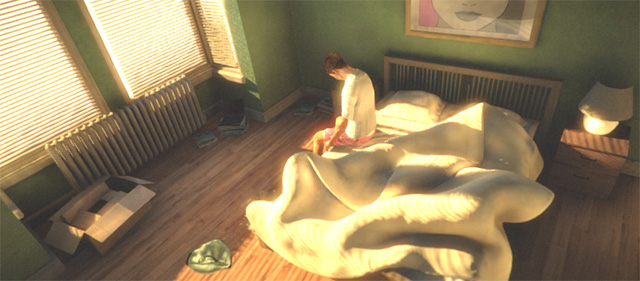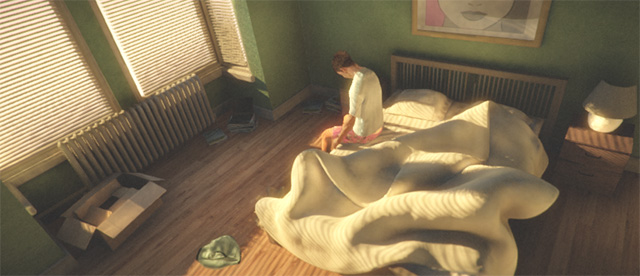High Dynamic Range Rendering
In standard renderingThe process of drawing graphics to the screen (or to a render texture). By default, the main camera in Unity renders its view to the screen. More info
See in Glossary, the red, green and blue values for a pixelThe smallest unit in a computer image. Pixel size depends on your screen resolution. Pixel lighting is calculated at every screen pixel. More info
See in Glossary are each represented by a fraction in the range 0..1, where 0 represents zero intensity and 1 represents the maximum intensity for the display device. While this is straightforward to use, it doesn’t accurately reflect the way that lighting works in a real life sceneA Scene contains the environments and menus of your game. Think of each unique Scene file as a unique level. In each Scene, you place your environments, obstacles, and decorations, essentially designing and building your game in pieces. More info
See in Glossary. The human eye tends to adjust to local lighting conditions, so an object that looks white in a dimly lit room may in fact be less bright than an object that looks grey in full daylight. Additionally, the eye is more sensitive to brightness differences at the low end of the range than at the high end.
More convincing visual effects can be achieved if the rendering is adapted to let the ranges of pixel values more accurately reflect the light levels that would be present in a real scene. Although these values will ultimately need to be mapped back to the range available on the display device, any intermediate calculations (such as Unity’s image effects) will give more authentic results. Allowing the internal representation of the graphics to use values outside the 0..1 range is the essence of High Dynamic Range (HDR) rendering.
Working with HDR
HDR is enabled separately for each camera using a setting on the CameraA component which creates an image of a particular viewpoint in your scene. The output is either drawn to the screen or captured as a texture. More info
See in Glossary component:
When HDRhigh dymanic range
See in Glossary is active, the scene is rendered into an HDR image buffer which can accommodate pixel values outside the 0..1 range. This buffer is then used by post-processing effects such as the BloomA post-processing effect used to reproduce an imaging artifact of real-world cameras. The effect produces fringes of light extending from the borders of bright areas in an image, contributing to the illusion of an extremely bright light overwhelming the camera or eye capturing the scene.
See in Glossary effect in the Post-processing stack. The HDR image is then converted into the standard low dynamic range (LDR) image to be sent for display. This is usually done via TonemappingThe process of remapping HDR values of an image into a range suitable to be displayed on screen. More info
See in Glossary, part of the Color Grading pipeline. The conversion to LDR must be applied at some point in the post-process pipeline but it need not be the final step if LDR-only post-processing effects are to be applied afterwards. For convenience, some post-processing effects can automatically convert to LDR after applying an HDR effect (see Scripting below).
Tonemapping
Tonemapping is the process of mapping HDR values back into the LDR range. There are many different techniques, and what is good for one project may not be the best for another. A variety of tonemapping techniques have been included in the Post-processing stack. To use them you can download the Post-processing stack from the Asset StoreA growing library of free and commercial assets created by Unity and members of the community. Offers a wide variety of assets, from textures, models and animations to whole Project examples, tutorials and Editor extensions. More info
See in Glossary. A detailed description of the tonemapping types can be found in the Color Grading documentation.


Advantages of HDR
- Colors not being lost in high intensity areas
- Better bloom and glow support
- Reduction of banding in low frequency lighting areas
Disadvantages of HDR
- Uses floating point render texturesA special type of Texture that is created and updated at runtime. To use them, first create a new Render Texture and designate one of your Cameras to render into it. Then you can use the Render Texture in a Material just like a regular Texture. More info
See in Glossary (rendering is slower and requires more VRAM) - No hardware anti-aliasing support (but you can use an Anti-Aliasing post-processing effect to smooth out the edges)
- Not supported on all hardware
Usage notes
Forward Rendering
In forward renderingA rendering path that renders each object in one or more passes, depending on lights that affect the object. Lights themselves are also treated differently by Forward Rendering, depending on their settings and intensity. More info
See in Glossary mode HDR is only supported if you have a post-processing effect present. This is due to performance considerations. If you have no post-processing effect present then no tonemapping will exist and intensity truncation will occur. In this situation the scene will be rendered directly to the backbuffer where HDR is not supported.
Deferred Rendering
In HDR mode the lighting buffer is also allocated as a floating point buffer. This reduces banding in the lighting buffer. HDR is supported in deferred rendering even if no post-processing effects are present.
Scripting
The ImageEffectTransformsToLDR attribute can be added to a post-processing effect script to indicate that the target buffer should be in LDR instead of HDR. Essentially, this means that a script can automatically convert to LDR after applying its HDR post-processing effect. See Writing Post-processing Effects for more details.